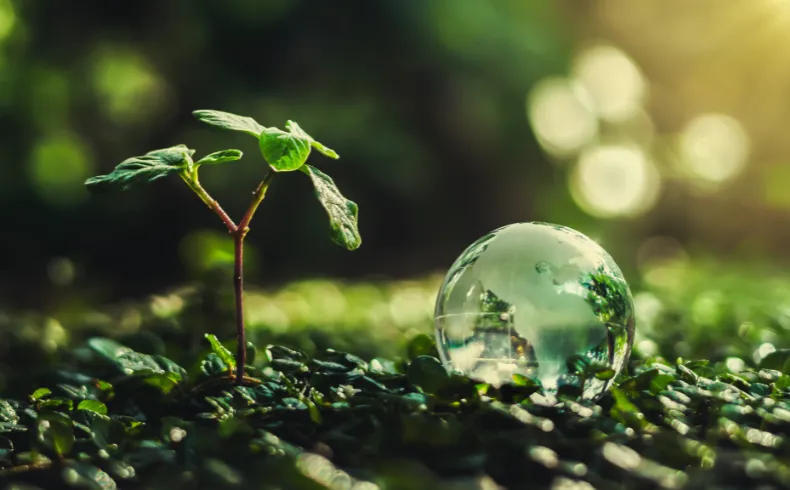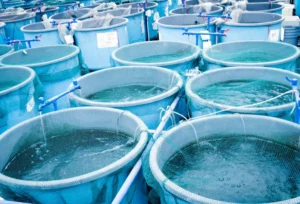The topic of sustainability and innovation is taking center stage like never before.
A 2022 survey found that over 60% of consumers are willing to pay more for products from environmentally responsible companies.
Integrating sustainable practices is no longer an option, it’s imperative for businesses that want to remain competitive and viable. This statistic underscores an unavoidable reality
Sustainability is about meeting present needs without compromising the ability of future generations to do the same.
For companies, this means adopting a “triple bottom line” approach that balances financial profitability with positive social impact and environmental stewardship.
It requires rethinking and reinventing core business models through sustainable innovation. However, the path to true sustainability involves more than just simple eco-friendly initiatives.
Sustainable innovation is the practice of creating new ideas, products, services, and methods that allow companies to grow while improving their environmental and social footprint.
From pioneering renewable energy solutions to pioneering closed-loop manufacturing processes, sustainable innovation keeps businesses on the edge while future-proofing against resource depletion, climate change, and a growing eco-conscious consumer base.
The Business Case for Sustainability and Innovation
Put simply, Sustainability and Innovation is no longer optional!
It’s an essential driver of long-term profitability and growth.
Companies that fail to innovate sustainably risk falling behind more eco-conscious competitors and becoming irrelevant to an increasingly values-driven customer base.
On the flip side, organizations that wholeheartedly embrace sustainable innovation stand to reap myriad benefits. For starters, it allows them to get ahead of consumer and regulatory demands for environmentally and socially responsible products and practices.
Sustainable companies also gain an edge in attracting top talent, as studies show younger generations prioritize working for ethical, purpose-driven employers.
Additionally, sustainable innovation creates opportunities for cost savings through improved energy efficiency, smarter resource utilization, and waste reduction.
It mitigates risks from future carbon taxes or natural resource shortages. And it opens pathways to new revenue streams by allowing companies to create truly game-changing “green” products and services.
Sustainability and Innovation future-proofs a company’s business model in the face of climate change and resource scarcity.
While costly in the short term, it pays dividends down the road through increased resilience, competitiveness, and brand reputation. That’s why those who fail to embed sustainability in their innovation process will likely struggle in the long run.
As Janine Benyus, a pioneer of the biomimicry movement, puts it: “In nature, there is no life without environmental integration and symbiosis.
Building a Culture of Sustainability and Innovation
While most companies recognize the importance of sustainable innovation, achieving it is easier said than done.
To successfully embed sustainability into the innovation DNA requires an organization-wide cultural shift and commitment to the cause.
For starters, sustainability needs to be established as a core organizational value and priority equal to profitability. This means setting clear, measurable sustainability goals and benchmarks aligned with entities like the UN Sustainable Development Goals.
These goals should inform all innovation initiatives from product design to manufacturing processes.
It’s also critical to nurture a culture of cross-functional collaboration and knowledge sharing. Sustainable innovation inherently requires a “systems thinking” approach that analyzes how different pieces interconnect.
Siloed teams working in isolation will struggle to see the bigger picture and identify synergies.
Organizations should look to proven sustainability and innovation frameworks like Cradle to Cradle, Biomimicry, The Natural Step, and the Circular Economy as guides.
These principles emphasize closed-loop systems, eliminating waste, and designing products/services that work in harmony with natural systems from the outset.
Equally important is investing in sustainable innovation capabilities through training, the right tools/technologies, and partnerships with universities or environmental organizations.
Upskilling the workforce increases buy-in while providing essential skills in cutting-edge methods like lifecycle analysis, ethical supply chain management, and environmental impact modeling.
By fostering a culture where sustainability is top-of-mind and ingrained in the innovation process from conception to execution, companies will be better positioned to develop breakthrough solutions while minimizing environmental and societal harm.
Examples of Sustainability and Innovation in Action
For compelling examples of sustainable innovation in the real world, look no further than corporations like Interface, Patagonia, and Tesla.
These companies prove that boosting environmental and social sustainability can go hand-in-hand with driving game-changing innovation and impressive profits.
As the world’s largest modular flooring manufacturer, Interface has been a pioneer in sustainable innovation since the mid-1990s.
Founder Ray Anderson embarked on an audacious vision he dubbed “Mission Zero” – to have zero negative impact on the environment by 2020 through practices like closed-loop manufacturing.
Since then, Interface has developed square yards of sustainable flooring solutions like Stratify tiles made from biosynthetic materials and their CQuest BioX soiling lines that incorporate everything from salvaged wood to shredded shoes.
Outdoor apparel brand Patagonia is another prime example, launching initiatives like the Common Threads Partnership focused on reducing consumerism and extending product lifecycles.
Their WornWear website facilitates buying and selling used Patagonia gear, while their Recyclable Black Hole line of apparel and bags originated from recycled fishing nets and fabric scraps. Innovations like these have allowed Patagonia to divert millions of pounds of waste from landfills and avoid substantial carbon emissions.
Finally, in automotive, Tesla’s groundbreaking electric vehicles coupled with their massive sustainable energy ecosystems (solar panel roofs, Powerwall batteries, etc.) have spurred an industry-wide reckoning and pivot toward more sustainable transportation solutions.
Tesla’s Model 3 alone has helped cut over 3 million tons of CO2 emissions from being released into the atmosphere.
These companies are living proof that weaving sustainability into one’s innovation blueprint is not just good for the planet – it’s good for business, profits, and gaining a crucial competitive edge.
They’re helping blaze a path toward a future where sustainable innovation becomes the norm rather than the exception.
The Competitive Advantages of Sustainability and Innovation
Beyond simply future-proofing operations and bolstering brand reputation, sustainable innovation creates clear competitive advantages for companies that embrace it.
Those who get ahead of the curve today will be better insulated from future costs and risks brought on by climate change, resource shortages, environmental regulations, and economic volatility.
Sustainable innovation also opens the door to lucrative new markets and revenue streams. As a first mover, you can establish yourself as a category leader and capture market share before competitors. Innovative eco-friendly products and services also command pricing premiums from sustainability-conscious customers.
Ultimately, businesses need to view sustainable innovation not as a moral obligation or passing trend, but as an essential strategic imperative and path toward long-term resilience in our rapidly evolving world. The alternative is quickly being outpaced by more adaptable, forward-thinking rivals.
As sustainable innovation gains momentum across industries, a slew of new tools and resources have emerged to aid companies on their journeys. One promising frontier is the use of artificial intelligence and machine learning technologies to accelerate and optimize sustainable product design.
MIT recently launched its Sustainable AI Labs to research applications of machine learning in molecular energy storage systems and other clean technologies.
Conclusion
There’s no denying the pivotal role Sustainability and Innovation must play in shaping a more environmentally and economically resilient future.
By rethinking products, processes, and business models through a sustainability lens, companies can reduce their ecological footprint while capturing new market opportunities and driving long-term profitability.
Those willing to reimagine their approach and wholeheartedly commit to sustainable innovation will be the winners moving forward.
But achieving true Sustainability and Innovation requires more than just one-off “green” initiatives. It demands system-level changes to company culture and innovation processes – baking sustainability into the very ethos and DNA of the organization.
From adopting holistic sustainability frameworks to upskilling personnel to forging cross-industry partnerships, businesses must treat sustainable innovation not as a checklist item but as an existential imperative.
Brighter days are ahead for the companies that lead the charge in developing the sustainable innovations that will power our economy in the decades to come. The time is now for all organizations to step up and contribute to a healthier, more prosperous planet for future generations.





